Every brand and business is operating in an era of unprecedented technological innovation, and in the resulting digital haze, it can be quite a challenge for C-suite leaders to form authentic digital connections with key stakeholders. New research from Deloitte shows leaders how to develop strategies for today’s fast-changing digital age, while keeping the human experience at the center of their work.
Through interviews with more than 80 subject matter experts across the globe, Deloitte identified seven key trends that likely every business will need to focus on over the next 18 to 24 months to continue evolving socially and human-conscious enterprises. The seven trends identified: Purpose, Human Experience, Agility, Participation, Fusion, Talent and Trust.
Why elevating the human experience is so important—and so challenging
While digital technologies make it easier to navigate through busy lives, they can erode the fundamental elements of human connection. When digital connections lack a human touch, people can feel isolated, underrepresented and unfulfilled, which can result in quick answers to narrowly defined problems vs. more sustainable solutions.
Elevating the human experience:
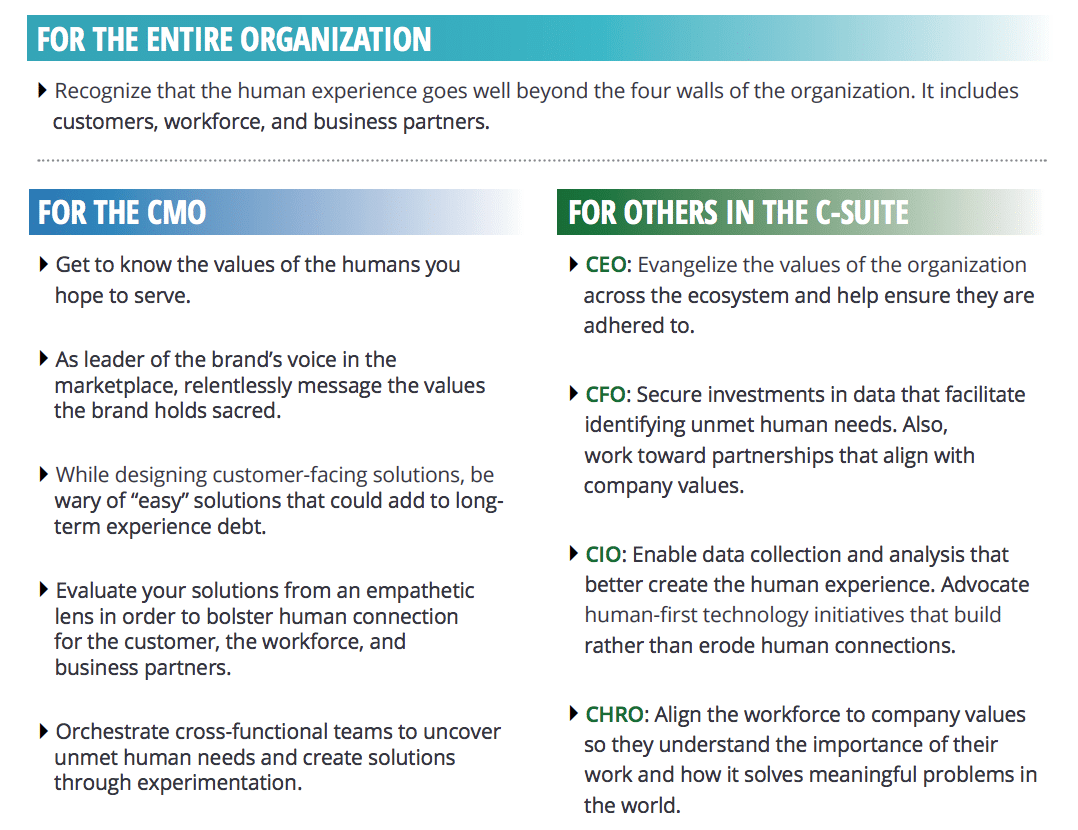
The rapid pace of digital change is adding to a buildup of these unintended consequences, which Deloitte calls “experience debt.” This debt has far-reaching implications for humans who navigate these digital solutions. To pay down this experience debt, organizations and their ecosystems should focus on elevating the human experience. For businesses, this means striving to address unmet human needs for connection by aligning customers, the workforce, and partners to a common purpose.
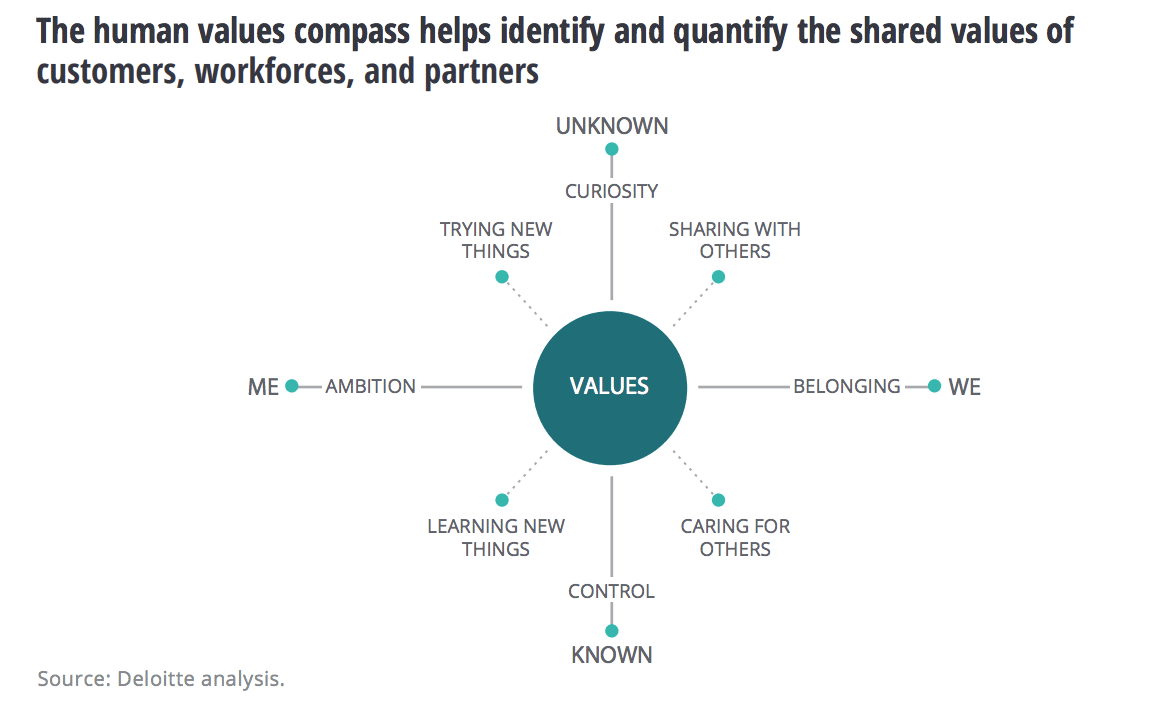
Brand purpose is critical for human connections
A clear purpose can be critical for organizations—it articulates why an organization exists, what problems it is trying to solve, and who it wants to be to each human it impacts. Brands and businesses are using purpose to create deeper connections with consumers, doing more for the communities in which they work, attract and retain talent, and achieve greater results and impact in the process.
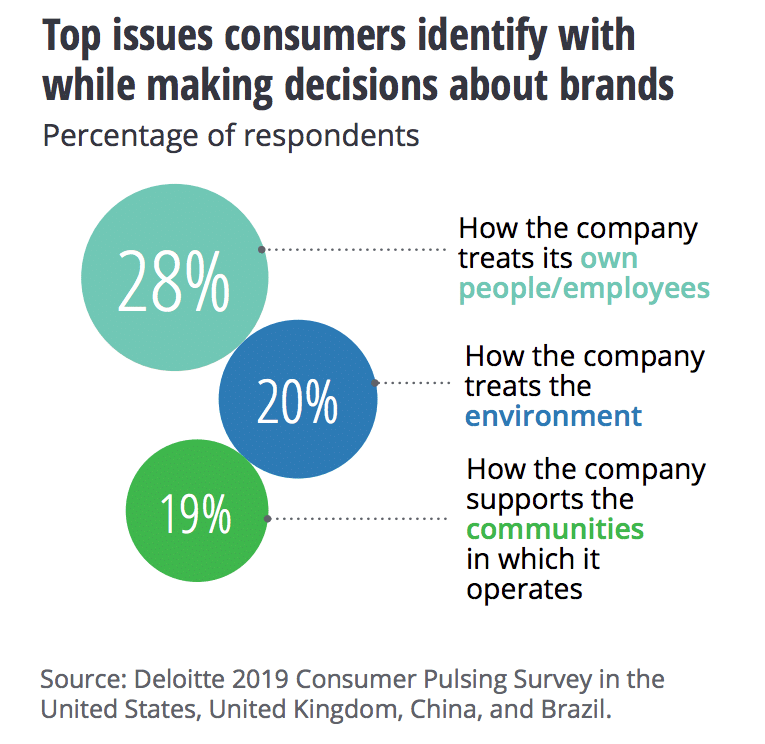 Those that lead with purpose, and build around it, can achieve continued loyalty, consistency and relevance in the lives of consumers. What’s more, according to recent data from the Harvard Business Review, companies with high levels of purpose outperform the market by 5–7 percent per year, on par with companies with best-in-class governance and innovative capabilities. By leading with purpose, many companies are outpacing their competitors and leaving an impact on everyone they touch.
Those that lead with purpose, and build around it, can achieve continued loyalty, consistency and relevance in the lives of consumers. What’s more, according to recent data from the Harvard Business Review, companies with high levels of purpose outperform the market by 5–7 percent per year, on par with companies with best-in-class governance and innovative capabilities. By leading with purpose, many companies are outpacing their competitors and leaving an impact on everyone they touch.
The amplification of consumer participation
According to Deloitte’s Driving band loyalty with emotion study, nearly 75 percent of consumers say they expect two-way relationships with organizations they do business with. Increased customer interaction can build competitive advantage and develop a stronger relationship with the brand. Technology provides new opportunities for consumers, citizens, and communities to engage directly in shaping, influencing, building and co-creating the overall brand.
Identifying how, and in which areas, to integrate customer participation into the consumer journey and the product lifecycle can be overwhelming. However, by using the models and approaches best suited to an organization’s brand and marketing strategy, businesses can successfully achieve and benefit from customer participation.
Are you a trust buster or trust builder?
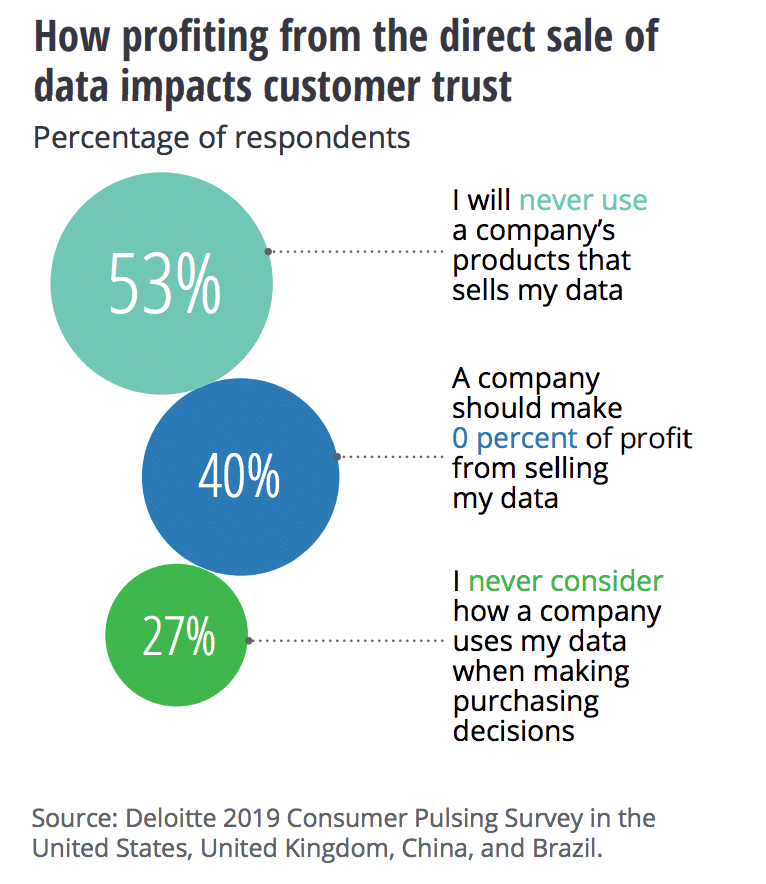 Trust is a primary determinant in how people assess brands. In fact, according to one survey by Sprout Social, nearly 9 out of 10 Americans (86 percent) believe that business transparency is more important today than ever before, and 7 out of 10 (73 percent) will pay for products that promise total transparency.
Trust is a primary determinant in how people assess brands. In fact, according to one survey by Sprout Social, nearly 9 out of 10 Americans (86 percent) believe that business transparency is more important today than ever before, and 7 out of 10 (73 percent) will pay for products that promise total transparency.
Customers, regulators, and the media expect brands to be open, honest, and consistent across all aspects of their business—from products and promotions to workforce culture and partner relationships.
In an era of connected technology and big data analytics, companies should create a structure that systematically builds trust by protecting what stakeholders value most—customer data and privacy.
At the same time, they should proactively detect threats in the domains of cybersecurity, data protection, regulatory compliance and reputation. By supporting the trust agenda with respect to customer data and ethical use of artificial intelligence, brands can create a more coherent, relevant and less invasive customer experience.
Building trust in your brand:
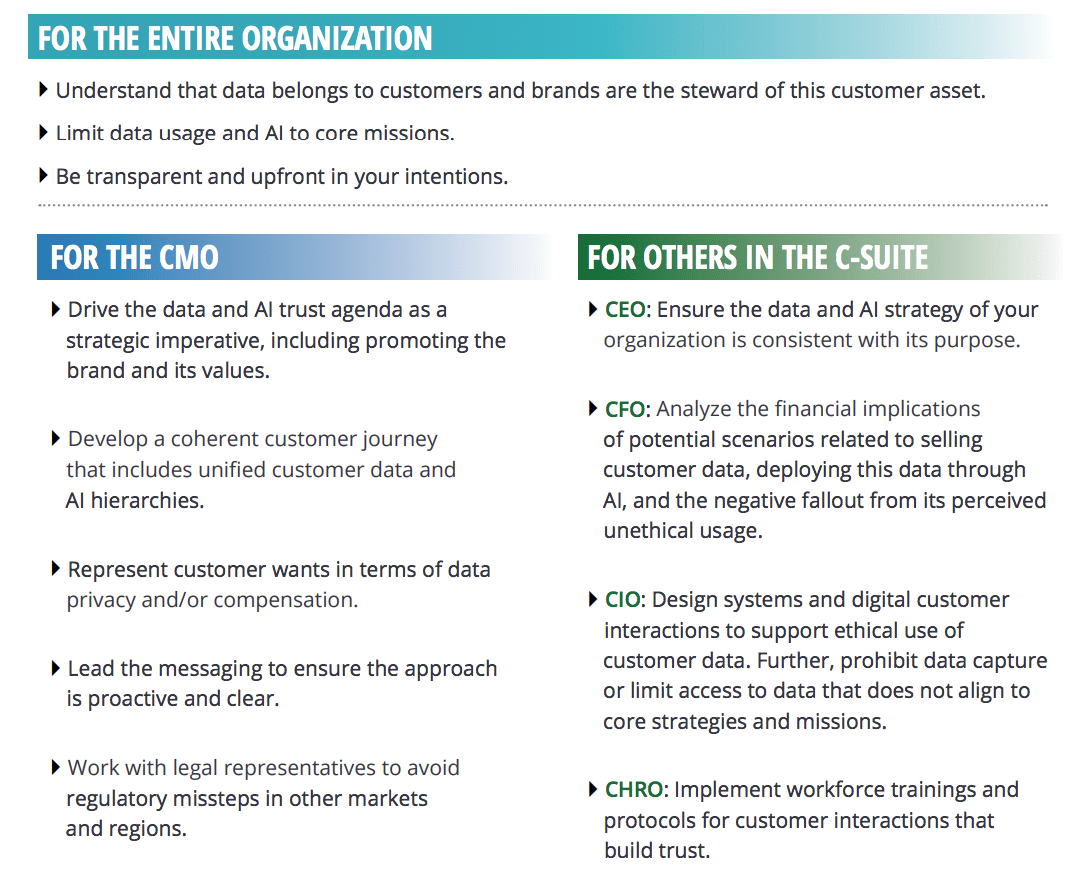
Fusion is the new business blend
Traditional boundaries are disappearing, signaling a fusion of once disparate industries. Consequently, brands are moving from being isolated entities to being members of far-reaching ecosystems. Many leading companies are seeking new ways to establish themselves in these much broader ecosystems—or risk being disrupted by new competition.
Businesses that solve unmet needs through fusion with smart, open ecosystems can systematically displace competitors that are unwilling (or unaware) to do the same. Organizations can expand to new business areas by looking beyond industry boundaries to address customer needs, identify opportunities for growth and partnerships, and create new value for customers.
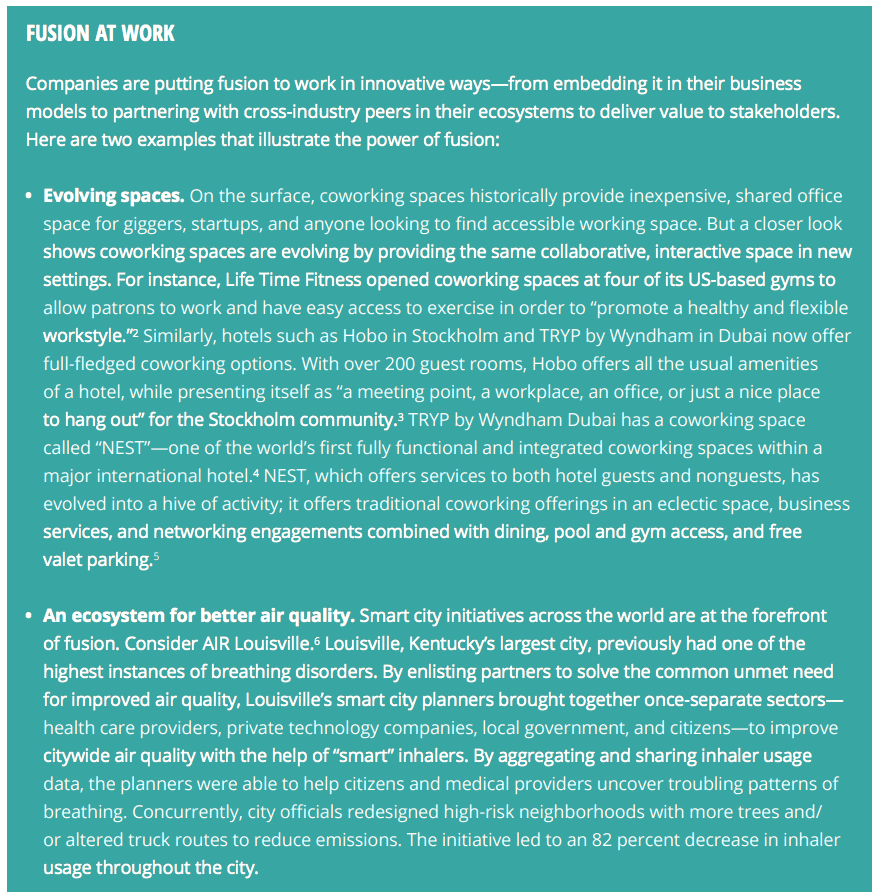
Diffusing agility across the organization
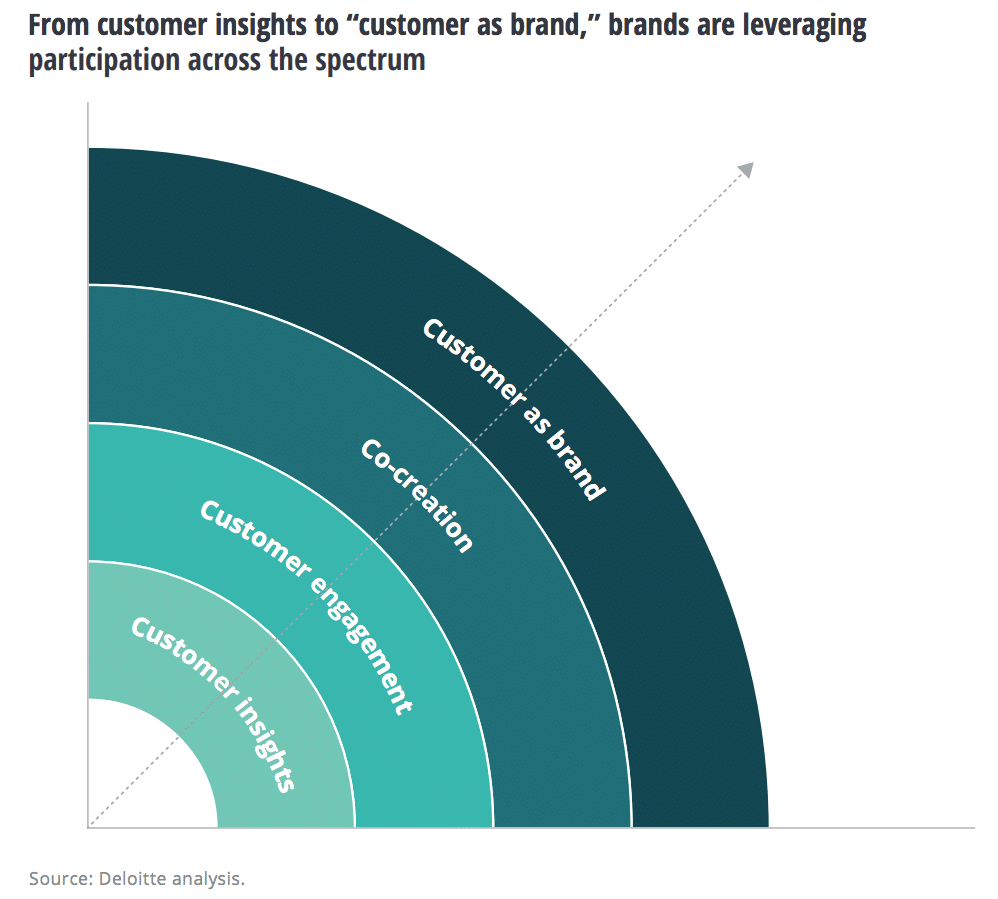 Many leading brands are differentiating themselves by embracing agile ways of working and predictive technologies to gain a share of culture and conversation rather than just share of voice or brand impression. Other brands should follow suit, moving from reactive to proactive engagement to address the wants and needs of customers.
Many leading brands are differentiating themselves by embracing agile ways of working and predictive technologies to gain a share of culture and conversation rather than just share of voice or brand impression. Other brands should follow suit, moving from reactive to proactive engagement to address the wants and needs of customers.
For this, companies can restructure their marketing functions, leverage the power of real-time data accessed through digital platforms, and quickly gain insights to design more personalized, human experiences in an agile manner. Agility is both a framework and mindset, which often requires an organizational shift and built-in internal capabilities and cross-functional teams that accelerate their reaction time to capitalize on societal moments.
Valuing your most important asset—talent
An organization’s people—its most important asset—now consists of a diverse swath of individuals, including brand ambassadors, giggers, social influencers and partners. These individuals reside both inside and outside the walls of the organization. This diverse workforce can require an approach that values an individual’s experience and nurtures the “entire person,” enabling them to evolve and develop new skills and relationships, while building loyalty toward brands and places of employment.
Improving the talent experience:
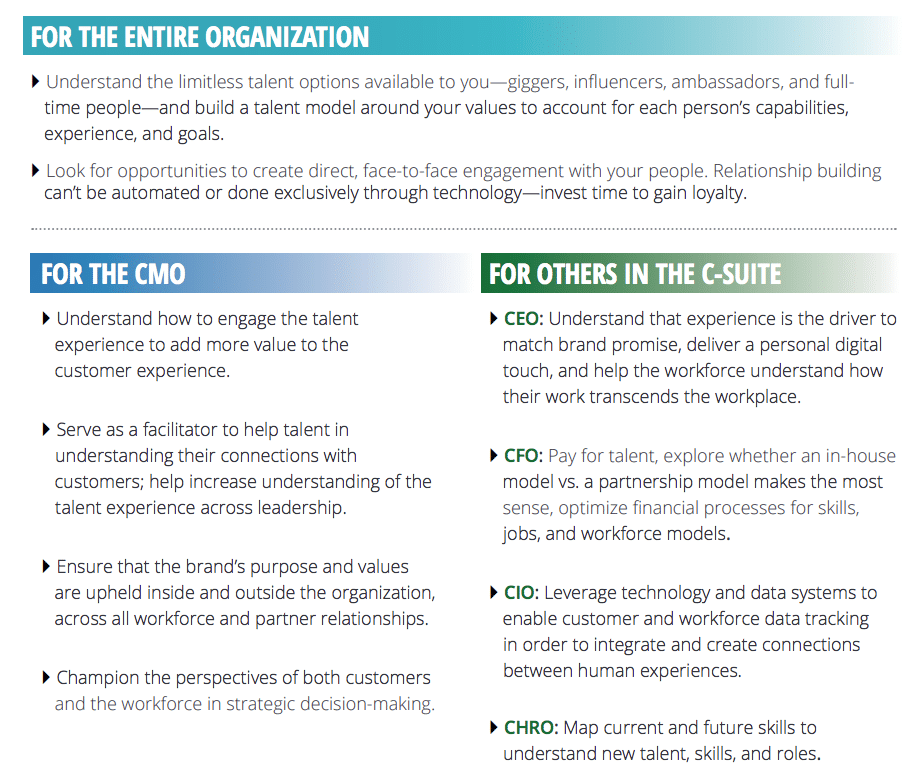
What’s more, organizations with the best workforce experiences also enjoy 12 percent greater customer satisfaction than other organizations, and their three-year revenue growth rate is 2.3 times greater, according to recent UNC Kenan-Flagler Business School research.
Download the full report here.
The Global Marketing Trends report curated interviews with more than 80 subject matter experts across the globe—including the U.S., Canada, the UK, Germany, China, Brazil, Australia and others—to identify the most pressing trends that every business will have to focus its attention on over the next 18 to 24 months to build a socially and human-conscious enterprise. The report integrates new research and analysis (both through survey instruments and C-suite interviews), insights from academic literature, and stories from the field.








